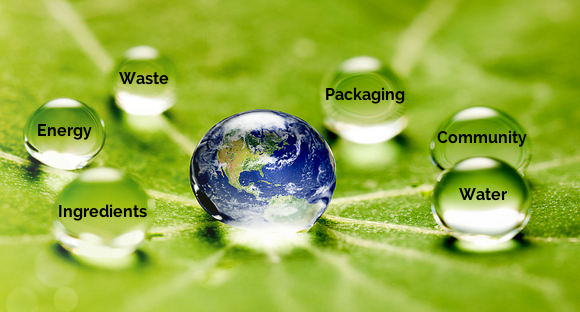These days, according to the Hartman Group, 89% of consumers report “engaging in sustainability.” It’s an impressive statistic, but consumer actions, commitment, and motivations vary widely, making business communication about energy and sustainability tricky. Effective outreach requires great nuance and deep knowledge of the category, behavior change, purchasing barriers, demographic differences among consumers, and more.
There is no one-size-fits-all solution.
That’s why we’re always excited to see great work in this space from other brands. Toms of Maine, the personal care products brand, recently created a website designed to share the brand’s actions and goals regarding energy and sustainability. It’s called the “Goodness Report,” and Tom’s is using it to educate customers about six categories of responsibility-themed initiatives: ingredients, energy, packaging, waste, community, and water.
“Sustainability reports” are nothing new, but Tom’s “Goodness Report” is a fresh and interesting take on the concept. In each category, Tom’s examines the company’s efforts to meet specific goals with anecdotes, charts and interviews. And by leveraging imagery and copious click opportunities, Tom’s is clearly trying to draw customers into the content.
In many ways, Tom’s has offered up exactly what many environmentally-conscious consumers clamor for – deliberate and transparent action against specific targets. As Tom’s CEO, Tom O’Brien said, "For many years we’ve had information about our products, sustainable business practices and values on our packaging and website. We’re learning that consumers want even more information."
Connecting the Dots

But while the Goodness Report does an excellent job promoting customer education, it could do much more to promote customer engagement, which builds loyalty and drives sales. It’s not enough to simply place information out on the Internet. To make an impact on consumers, brands must engage customers in a dialogue or stimulate an emotional response.
While many consumers report being “somewhat interested” in social and environmental responsibility, only a tiny subset cares enough to really dig into corporate reporting. What ultimately convinces consumers to buy products is messaging about how the company or product relates to them, the consumers. How will the products of Company A improve the life of Customer B?
If Tom’s were to close the loop on its story, the company would use the “Goodness Report” to show consumers how reduced waste, improved packaging and better ingredients lead to better products, and thus improved lives for consumers.
In addition to creating stronger bonds with current customers, a focus on enhanced personal benefits will draw new customers into the fold. As it stands, the Goodness Report resonates only with “dark greens.” To broaden the customer base, it is essential for Tom’s to show potential customers why all this environmental stuff matters to them. In doing so, the brand will become relevant to many more people. Later, by incorporating Tom’s social channels into the “Goodness Report,” the brand can field questions and engage with customers about core environmental values and product benefits at the same time.
Tom’s has already done the heavy lifting – making real business changes. It’s fantastic that Tom’s of Maine is “taking on greater accountability” and creating “plans to address obstacles that get in [the] way.” Now the brand must build on its initial effort and truly bring the customer’s voice and values to the table.

